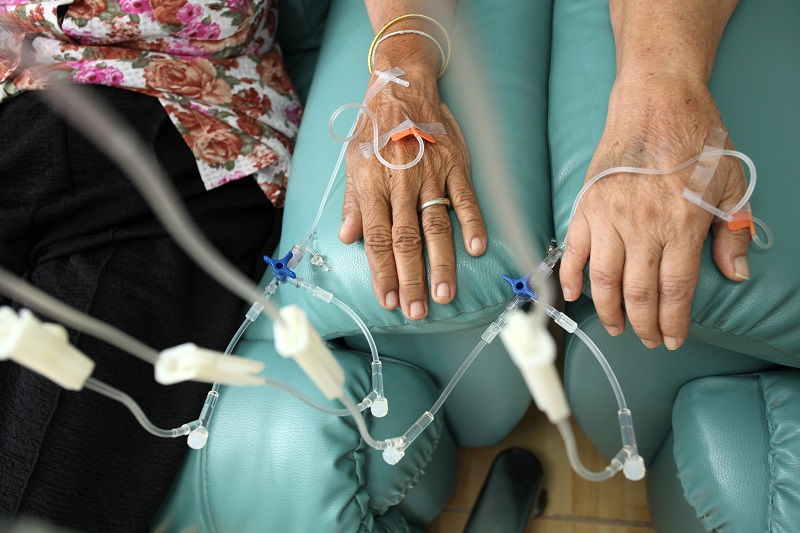US President Barack Obama's announcement of a "moonshot" bid to cure cancer, continues a centuries-long quest to defeat a disease which kills over eight million people every year. Cancer treatments have developed with fits and starts since the disease -- which causes abnormal cells to multiply and spread, killing healthy ones -- was first identified more than 5,000 years ago.There are more than 100 types of cancer, each with its own diagnosis and treatment. Jointly, they cause over one in ten of all human deaths.
SURGERY:
Already in the second century, Greek doctor Galen wrote about surgical techniques for removing cancerous growths -- a risky endeavour at the time, with blood loss and other serious complications.
Surgery became common only in the 19th century with the advent of anaesthesia, and is still the standard cancer treatment today, often followed by radio- or chemotherapy to kill any remaining cancer cells.
HORMONE THERAPY:Hormone therapy for breast, prostate, womb and ovarian cancers has been around for more than half a century. It lowers the level of hormones naturally present in the body, to stymie types of cancer which rely on hormones to grow or develop.
RADIATION:
Radiation has been used since the early 1900s to kill cancer cells. High-energy particles or waves -- such as X-rays or electron beams -- are directed at the site of the cancer to alter the harmful cells' DNA and stop them replicating, with as little damage as possible to nearby healthy cells.
CHEMOTHERAPY:
A common, potent treatment with severe side-effects, chemotherapy emerged from research into mustard gas and other chemical warfare agents during World War II.
In essence a poison, it involves injecting powerful chemicals into the body to kill tumours which have spread beyond the reach of surgeons or radiotherapists. It is the least localised of treatments, with severe repercussions for healthy cells.
Many cancers, like those affecting the lungs, liver or pancreas, do not respond well to any of the current treatments, underlining the need for innovative solutions. Here are some of them:
IMMUNOTHERAPY:
Still in its infancy, immunotherapy mimics the body's own immune response to the presence of cancer cells. Scientists today can produce antibodies targeting harmful cells, and are using these to treat some cancers, including skin cancer.
Still out of reach is a vaccine that would boost the body's own, natural immune response.
Scientists hope that immunotherapy will ultimately allow a more aggressive cancer treatment with fewer side-effects, leaving the patient with long-term protection.
It does not kill healthy cells.
MOLECULAR TARGETED THERAPY:
These are drugs that attack and kill harmful cells, not healthy ones. Whereas chemotherapy targets all rapidly-dividing cells in the body, these new drugs zoom in on specific molecules that cancerous cells need to divide and spread. One drug so far has proven effective against a type of leukaemia, and many others are in the research stage.
GENETICS:
The relatively new field of genetic medicine holds the potential to target cancer on many fronts. Gene therapy could involve introducing or altering a gene, either to boost immune cells or make cancer cells more sensitive to drugs.
Genes contain the genetic codes that allow cells to function.
A gene-editing technique known as CRISPR -- which allows scientists to insert, remove and correct DNA within a cell is widely regarded as a potential cancer-buster.
Sources: American Cancer Society, Cancer Research UK, Cancer Research Institute, World Health Organization.








